Social Influence, Habit Change And What’s Missing!
SOCIAL INFLUENCE, HABIT CHANGE AND WHAT’S MISSING! (ISSUE 98)
By Diane Gold
What is it with social influence and habit change? For habit change, it seems very obvious that people like support. And that more people change a habit using a buddy system or enlisting an accountability partner or group. This article will focus on what about groups helps us and what’s basic to success.
THE MOTIVATION WE GET FROM GROUPS
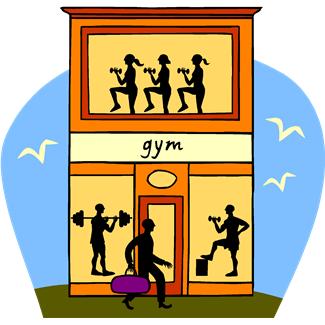 When thinking about social influence and habit change, I think of doing physical fitness like tai chi, going to the gym, going to a weight watch group, going to a rehab center. The function of each of these group activities is motivation of some kind. Let’s look at how the group motivates us.
When thinking about social influence and habit change, I think of doing physical fitness like tai chi, going to the gym, going to a weight watch group, going to a rehab center. The function of each of these group activities is motivation of some kind. Let’s look at how the group motivates us.
1) We are social creatures and can enjoy being in the company of others.
2) Because we are the ultimate creatures of habit, a new group setting can be a safer environment than one we have been around when acting out our old habit.
3) We can get courage from hearing that someone else understands us, whether we are talking about drugs, weight loss or anything else.
4) Being with others is a big distraction that can assist us when breaking in a new habit. After all, when we are alone, we are our sole distraction, and the only person on whom we rely; but, in a group setting, we have more social influence keeping us on track.
5) Because we are so impressionable, for the most part, we pick up the habits of others. Therefore, if we are around people who are productive, we will be more inclined to be productive.
AUTHOR’S NOTE
We should note that the group experience is not everyone’s preference. If we look at how Americans spend their time, according to the America Time Use Survey, done by the U.S. Department of Labor, Bureau of Labor Statistics, a similar percentage of people work out alone as together. But this statistic is not specifically for habit change activity, so I would suspect if there were a time use survey done for people who are changing a habit, there would be more groupies than soloists.
SUCCESS RATE
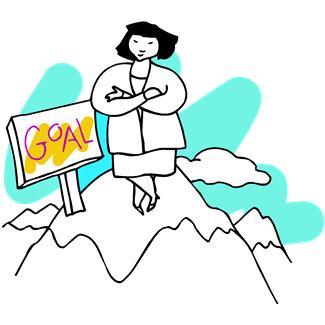 When we look at the amount of people who go back to their old habits after six months, a year, five years; it can be disheartening. There’s an interesting statistical article from 2004 about how treatment doesn’t work at:
When we look at the amount of people who go back to their old habits after six months, a year, five years; it can be disheartening. There’s an interesting statistical article from 2004 about how treatment doesn’t work at:
http://www.soberforever.net/currenttreatdoesnt.cfm.
Unfortunately, after writing about how treatment doesn’t work, the article’s publisher contradicts itself by saying its treatment facility has a success rate 30% higher than anyone else.
It is fairly accepted that most people who become residents in rehabilitation centers succeed between 3% and 10% of the time to maintain their habit change. The data at centers is usually compiled without scientific method, and, because individuals only answer survey questions to arrive at conclusive data, it is extremely difficult to maintain study integrity.
SIDEBAR
This fact reminds me of another modality whose studies are sporadic, don’t always use scientific method and are small. It’s how tai chi, which saves lives, does its magic. Studies that involve mind-body answers and compare one’s lifestyle before and after are very expensive. To conduct a nice-sized primary study (one that uses fresh data to arrive at conclusions vs. a secondary study that analyzes and interprets a primary study), it can cost $250,000 and that would be for a small mind-body study.
WHAT’S MISSING?
So, what’s missing from all these programs that include one-to-one therapy, group therapy, peer group therapy, tai chi, chi kung, yoga, massage, sauna, meditation, organic vegan food and more?
I’m going to repeat what makes up a habit: a cue, a behavior and the resulting reward. This habit model doesn’t change. So what are we shooting for?
When we go into a program and do all the therapies mentioned above, we have one purpose. It is to change a habit. This requires that a new system be put in place. To build this, we must change the mind and develop skill and build our foundation. After all, we need to have something to hold on to when our urges show up in order to direct us to execute our new behaviors we have developed.
BUILDING FOUNDATION
Let’s use how tai chi changes us since I have seen it first-hand in many hundreds of people. Any mind-body work or other creative discipline can do it as long as the instructor understands how foundation is built and instructs it starting with the basics.
 People think tai chi is for exercise or defense, alone. It’s really for perception change. By doing a powerful exercise as tai chi is, we learn a systematic approach to movement. This system gives us tools to use in everyday life. As we acquire the patience to endure tremendous body exertion, we are learning a tool that works with anything in life. We have the understanding to know that the physical exertion and mental concentration needed to physically execute the movement is teaching us to follow through. And it is showing us we can do it.
People think tai chi is for exercise or defense, alone. It’s really for perception change. By doing a powerful exercise as tai chi is, we learn a systematic approach to movement. This system gives us tools to use in everyday life. As we acquire the patience to endure tremendous body exertion, we are learning a tool that works with anything in life. We have the understanding to know that the physical exertion and mental concentration needed to physically execute the movement is teaching us to follow through. And it is showing us we can do it.
This type of training gives us a foundation of skills that can be used to change a habit. They are self-esteem, pride, temperance, patience, tolerance, strength, balance and many more. These are the traits needed for habit change. If a rehab program misses teaching these skills through some type of system, the program participant is left in relatively the same condition as when s/he arrived, only learning a few rote skills which usually fade away, exposing the old habit.
CONCLUSION
We are socially influenced in many ways. When we see lots of people doing the same thing, we are more inclined to do that same thing. I always give the example of helping a fallen woman on the sidewalk. If no one has stopped to help, we are less likely to stop. If someone has already stopped to help, we will be more likely to inquire if we can help (unless we are public servants or feel like public servants and believe it is our duty to protect).
 It’s the same if we surround ourselves with people who do not take drugs or drink or overeat or gamble. We will be more likely to accept behaving in a similar fashion, especially if they know we are working on habit change. If we keep repeating a new behavior in place of the old habit at the same time as building a personal foundation, we will succeed. And what’s missing at the start will no longer be missing. We will have developed, not only new behaviors, but a structure within ourselves that will sustain the way we wish to live.
It’s the same if we surround ourselves with people who do not take drugs or drink or overeat or gamble. We will be more likely to accept behaving in a similar fashion, especially if they know we are working on habit change. If we keep repeating a new behavior in place of the old habit at the same time as building a personal foundation, we will succeed. And what’s missing at the start will no longer be missing. We will have developed, not only new behaviors, but a structure within ourselves that will sustain the way we wish to live.
ACTION STEP SEQUENCE
In order to see how easy it is to reach out to another, meaning, to form a group, here’s an action that might be helpful.
1) Approach someone who is in your life or just someone you meet at the library or supermarket.
2) Tell her (him) you are doing an experiment and that you need help one time between 6 pm and 7 pm one night this week. (It can be a different time.)
3) Tell the person that, when you call, you will ask her to tell you how important you are to your mission.
_________
Let us know how it goes.
_______________________________________________________________
_______________________________________________________________
FEEDBACK
Please leave a comment and LIKE.
DIANE GOLD, AUTHOR
Diane Gold, Founder of Warriors of Weight, Turning Habits Into Health, is a mentor in tai chi, kung fu and meditation, a music, fitness and stress expert, dedicated mom, studying plant-based nutrition and habit change.
She has been influenced by group dynamics and seen how others sometimes get trapped. She says,
“Fortunately, I was raised to be very independent. But groups still influence me. Whether we are helped by the group or our own personal way, the one that works is the right one for each of us.
“As for building a foundation, there’s only one way to go about it: one step at a time. Slowly, with consistency and follow-through. As we begin to build upon ourselves, we become very strong. Then we become the social influencers, and nothing more is missing.”

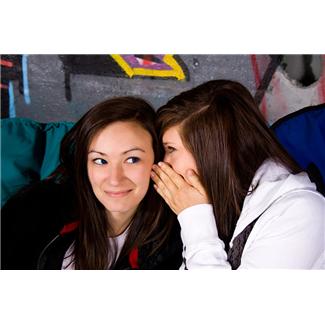 There is one secret to habit change. We don’t need to be college-educated to understand it. We don’t have to have been brought up in a wealthy home to use it. It is the same in every country. It applies to every habit. We all know the concept as it applies to daily life. Yet, it’s still a secret.
There is one secret to habit change. We don’t need to be college-educated to understand it. We don’t have to have been brought up in a wealthy home to use it. It is the same in every country. It applies to every habit. We all know the concept as it applies to daily life. Yet, it’s still a secret.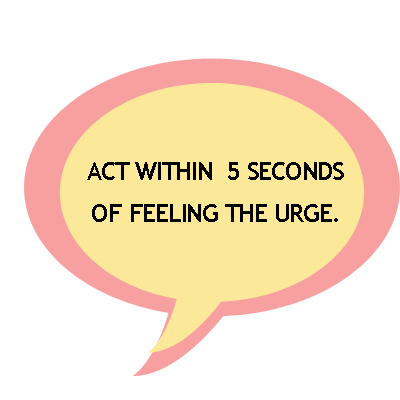 In order to hear it, we must be ready at this very moment to realize its truth; and that if we don’t make it a priority in our lives, we will go another way. Easiest is best, and that’s upon what this secret is based.
In order to hear it, we must be ready at this very moment to realize its truth; and that if we don’t make it a priority in our lives, we will go another way. Easiest is best, and that’s upon what this secret is based. Picture the situation where we get an urge to eat cake. We are on a strict regimen not to include cake in our food plan. If we don’t act with instant motion within five seconds of the urge, we have already given ourselves time enough to plan which way we will walk to the cake store, passing an Automatic Teller Machine along the way, since we keep no cash with us to avoid running out to buy food. Oops, we forgot about the ATM card. Or figuring out how to run up an account with the local grocer if we have no cash, if we have remembered not to have an ATM card around.
Picture the situation where we get an urge to eat cake. We are on a strict regimen not to include cake in our food plan. If we don’t act with instant motion within five seconds of the urge, we have already given ourselves time enough to plan which way we will walk to the cake store, passing an Automatic Teller Machine along the way, since we keep no cash with us to avoid running out to buy food. Oops, we forgot about the ATM card. Or figuring out how to run up an account with the local grocer if we have no cash, if we have remembered not to have an ATM card around.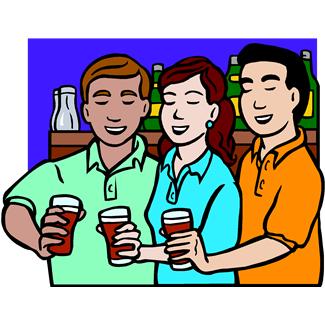 Imagine it’s the end of the work day, we are closing up our store and start getting the urge to join all our buddies across the street and drink alcohol. Yet, we know, at this time, we have decided to abstain from alcohol because it does not support us. So, when we feel that craving, we have a choice: we can act within 5 seconds and take a new action that does not involve alcohol OR wait and go drink alcohol, a behavior we already know is not working for us. If the people at the pub are really our buddies, we will see them later, not in the bar.
Imagine it’s the end of the work day, we are closing up our store and start getting the urge to join all our buddies across the street and drink alcohol. Yet, we know, at this time, we have decided to abstain from alcohol because it does not support us. So, when we feel that craving, we have a choice: we can act within 5 seconds and take a new action that does not involve alcohol OR wait and go drink alcohol, a behavior we already know is not working for us. If the people at the pub are really our buddies, we will see them later, not in the bar.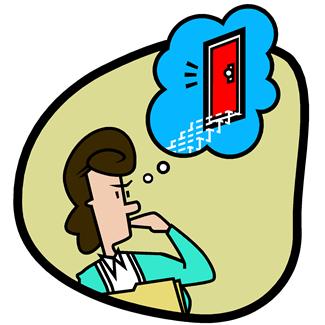 We have a very short window of opportunity in which to execute the one secret to habit change. It’s usually in that five second range that we must act. If we don’t take a new action within that time, we will habitually do our old behavior. And changing our habit will wait on the sidelines another day.
We have a very short window of opportunity in which to execute the one secret to habit change. It’s usually in that five second range that we must act. If we don’t take a new action within that time, we will habitually do our old behavior. And changing our habit will wait on the sidelines another day.
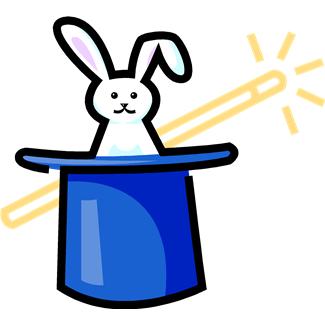 Do it. It is massively impactful, requires little activity, not much effort other than the effort of doing magic on or tricking one’s own mind. And it works on all the urges to a large degree.
Do it. It is massively impactful, requires little activity, not much effort other than the effort of doing magic on or tricking one’s own mind. And it works on all the urges to a large degree.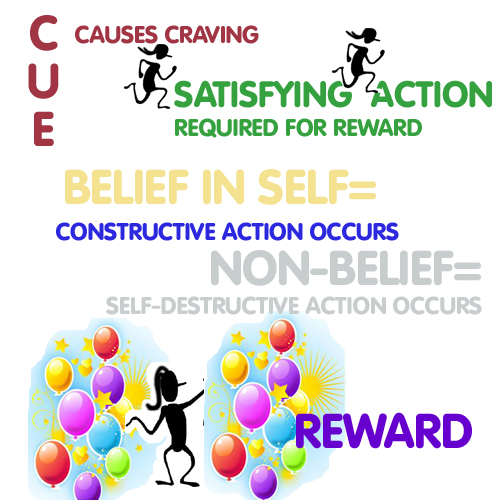
 There are so many cues that result in habitual action. Anything can set off someone who gambles to excess to create gambling by saying,
There are so many cues that result in habitual action. Anything can set off someone who gambles to excess to create gambling by saying,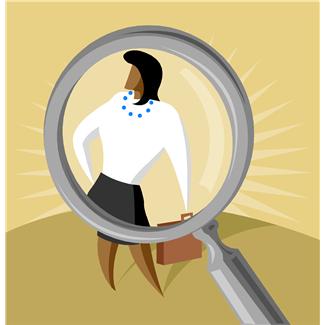 ACTION STEP
ACTION STEP
 After getting poison ivy many times in New York, I thought I was free of it when I moved to Florida. Ha! Little did I know that the precious mango tree that hung over the fence was loaded with the very same toxin. Cashew and pistachio, too, but I haven’t come into contact with those.
After getting poison ivy many times in New York, I thought I was free of it when I moved to Florida. Ha! Little did I know that the precious mango tree that hung over the fence was loaded with the very same toxin. Cashew and pistachio, too, but I haven’t come into contact with those.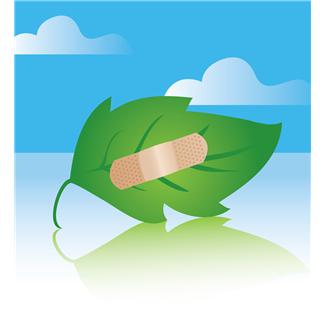 For years, I have been covering the dermatitis rash with bandages. This was for 2 reasons: 1) to keep the rash from spreading when the blisters broke and 2) to keep me from scratching it.
For years, I have been covering the dermatitis rash with bandages. This was for 2 reasons: 1) to keep the rash from spreading when the blisters broke and 2) to keep me from scratching it. The belief part of the equation comes from inside. We need to believe in ourselves to get the job done because we must be strong enough to remember our self-examination. Statistics say this is done in a group, even if it is a group of 2.
The belief part of the equation comes from inside. We need to believe in ourselves to get the job done because we must be strong enough to remember our self-examination. Statistics say this is done in a group, even if it is a group of 2. ACTION STEP
ACTION STEP Since I am about to speak on animal experiments, let me say that I applaud any research that does not involve the use of animals (gorillas already have rights) , that any animal should have the right to live a leisurely life in a posh facility as a reward if s/he has donated her time to human science;
Since I am about to speak on animal experiments, let me say that I applaud any research that does not involve the use of animals (gorillas already have rights) , that any animal should have the right to live a leisurely life in a posh facility as a reward if s/he has donated her time to human science;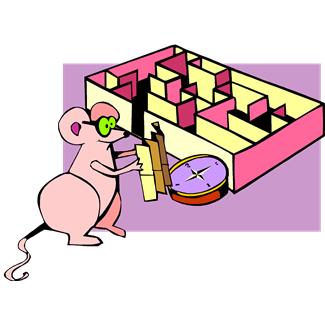 In Charles Duhigg’s book, cited above, he talks about experiments done by the National Institute on Alcohol Abuse and Alcoholism, where they studied habits using mice. They gave the mice a cue – which is the first of the three-part make-up of a habit – and, thus, created a habit. When the mice had learned to successfully respond to the cue, in this case, pull a lever, they were rewarded with food. This went on until it was quite routine for the cue, the action (the second part in the habit cycle) and the reward (the 3rd piece of the cycle).
In Charles Duhigg’s book, cited above, he talks about experiments done by the National Institute on Alcohol Abuse and Alcoholism, where they studied habits using mice. They gave the mice a cue – which is the first of the three-part make-up of a habit – and, thus, created a habit. When the mice had learned to successfully respond to the cue, in this case, pull a lever, they were rewarded with food. This went on until it was quite routine for the cue, the action (the second part in the habit cycle) and the reward (the 3rd piece of the cycle). For this action, he would get a reward of juice. After repeating this cycle – cue, acquired action (Duhigg calls this “routine”), reward – touching the lever to get his reward became an ingrained habit.
For this action, he would get a reward of juice. After repeating this cycle – cue, acquired action (Duhigg calls this “routine”), reward – touching the lever to get his reward became an ingrained habit.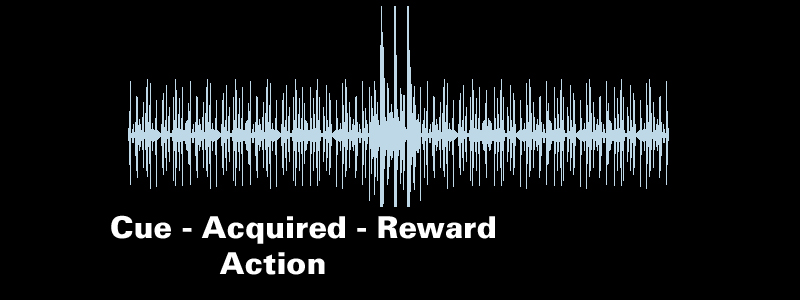 Schultz had had an electrode placed in Julio’s brain to read his neurological activity. It showed that Julio would get excited or happy when he got his reward. More activity at reward time in this simulation.
Schultz had had an electrode placed in Julio’s brain to read his neurological activity. It showed that Julio would get excited or happy when he got his reward. More activity at reward time in this simulation.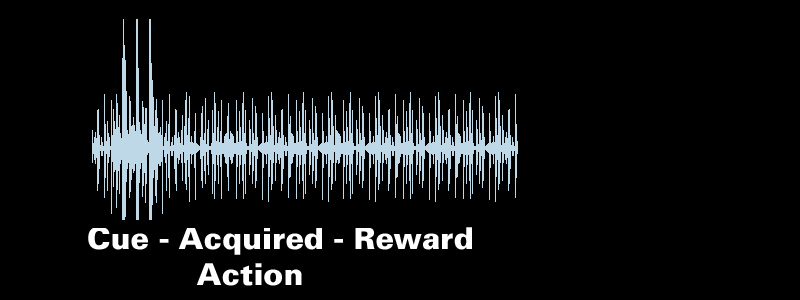 As Julio’s habit became stronger, from more time doing the same behavior, his neurological activity changed. The spike in activity came from anticipating his reward. So the cue became the trigger. The excitement that used to come from the reward was now coming when he saw the cue (in this case, it was visual). Ah, primates! How alike we all are.
As Julio’s habit became stronger, from more time doing the same behavior, his neurological activity changed. The spike in activity came from anticipating his reward. So the cue became the trigger. The excitement that used to come from the reward was now coming when he saw the cue (in this case, it was visual). Ah, primates! How alike we all are.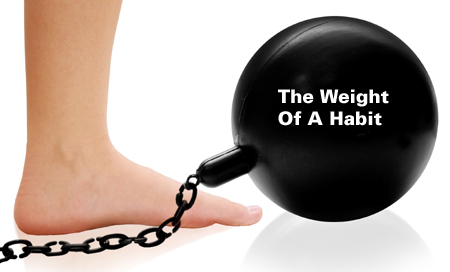 Let’s talk about Julio, the macaque, again. He had a strong habit. When the professor took away his reward or reduced the sugar content in his juice, he would become angry or depressed. He was hard to distract even when he was given the opportunity to go out of the experiment area and socialize with others because he was busy having an urge for what had been taken away. He continued to stay near his computer monitor which had given him the visual cue, continued to press the lever that had previously given him his reward, craving his reward.
Let’s talk about Julio, the macaque, again. He had a strong habit. When the professor took away his reward or reduced the sugar content in his juice, he would become angry or depressed. He was hard to distract even when he was given the opportunity to go out of the experiment area and socialize with others because he was busy having an urge for what had been taken away. He continued to stay near his computer monitor which had given him the visual cue, continued to press the lever that had previously given him his reward, craving his reward.





